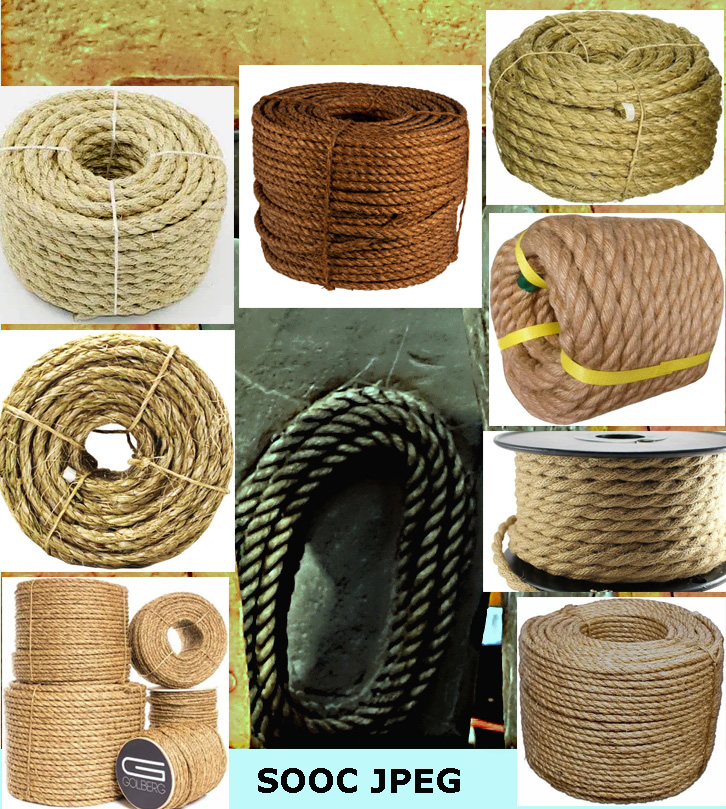Post processing vs. SOOC
Feb 22, 2023 11:31:50 #
Delderby wrote:
Ysarex wrote br br Delderby wrote: Your SOOC att... (show quote)
If by SOOC for the JPEG file you mean unprocessed, that, as has been pointed out previously, is not true! Post shutter click, the file has been processed - in the camera. The only truly SOOC (unprocessed) file is the RAW. In order to achieve the best results with JPEG, then, it is necessary to adapt the camera's processing settings to the best combination with those preprogrammed into the specific camera by the camera's manufacturer. By that means it may be possible to achieve the desired result. Failing that, computer post processing will be necessary with the JPEG. In any event, the absolute best result ONLY can be had when utilizing the RAW file! It really becomes a matter of choice - of that which is "possible - or "good enough".
Loren - in Beautiful Baguio City
Feb 22, 2023 11:35:14 #
anotherview wrote:
Please reference a Web-site that discusses this ma... (show quote)
I don't have an online source but be reasonable.
A database would not take up much memory, but the images would require significant space. Assuming that a set of test images were available, it is MUCH more reasonable to assume that the camera designer uses it to define algorithms to control exposures. That way the memory in the camera can be used for buffers and scratchpad for the conversion of raw sensor data to a usable image.
And you're assuming that the camera/cellphone ALWAYS gets the right exposure. It's easy enough to measure the average brightness in front of the camera and define an exposure from that. I was what we did with film cameras, which didn't have computers in them.
Feb 22, 2023 11:37:28 #
E.L.. Shapiro wrote:
I suppose some folks get up in the morning and fee... (show quote)
Right on point, as usual!!!
Loren - in Beautiful Baguio City
Feb 22, 2023 11:53:54 #
Delderby wrote:
The camera will record what is in front of it - reality! "Perceptively observed" might exist only in the mind of the photographer. Which is why I prefer SOOC. What we perceive, if different to SOOC, is untruthful.
AI has the ability to promote that which is visually untrue.
AI has the ability to promote that which is visually untrue.
The camera records what is "in front of it" - as determined by the parameters preset in the camera by the manufacturer and/or user. This is infinitely variable. Also infinitely variable from one to another is the perception of the photographer. I suppose the only really "true" presentation of that which is being observed would be by the utilization of photosensitive tubes - which would be hard pressed to produce a result as a "picture".
Loren - in Beautiful Baguio City
Feb 22, 2023 11:55:04 #
anotherview wrote:
Please reference a Web-site that discusses this ma... (show quote)
First, where do you SEE that database?
It is rather simple: deep learning algorithms work into steps:
1) training of the model
A blank model is created and then is is fed by thousands upon thousands of tagged images. The tags are the intended result, like "increase contrast +2" , "reduce greens -1", etc.
This process is very, and I mean VERY resource intensive and takes ginourmous process severs which work hundreds or thousands of hour to digest all that data.
The output of this process are the weights that define the model.
The weights, are part of the firmware that is loaded into the device, in this case a camera.
2) Now, the camera makes a much more simple process, called inference.
The RAW file is fed to the model, which spits "increase contrast" etc. to process the RAW file into an edited one which is later encoded to Jpeg.
In the camera is NO database of images, only the weights created by the training process. The images take many terabytes and are core know-how if the developer.
Again, only RAW is "SOOC", jpegs are heavily processed.
BTW, I do work on such models... The training is outsourced to big (BIG) Google servers and the inference stage is done with $100 devices.
Feb 22, 2023 12:01:06 #
Ysarex wrote:
And you never answered my question. I'll repeat it for you: "Why should I have reduced the exposure which would lower the SNR and begin to compromise the image quality in order to get a better camera JPEG?"
Hi again
In your pics the color-cast is most evident in the orange-colored rope.
What ever is adjusted will have a trade off.
I think the time has come to agree to differ.

Feb 22, 2023 12:07:24 #
jlg1000 wrote:
Wrong. br br 100 times wrong, and based on an abs... (show quote)
Correct,
" SOOC shooters process on site, RAW shooters process at home. "
Raw shooters have ALL the image data that your camera and lens can capture to work with in post processing.
SOOC images are compressed with discarded pixels, lost dynamic range, lost color pallet, with the camera processor algorithms having done processing on their own, making the processing decisions. You may have gotten used to SOOC images , but it isn't all of the reality of what your camera and lens saw.
Cheers and best to you.
Feb 22, 2023 12:19:59 #
gwilliams6 wrote:
Correct, br br " SOOC shooters process on si... (show quote)
I probably develop as many RAWs as I edit JPGs. If I spent as many $$ as some photographers do on software for editing, then I would probably be reluctant to admit how good JPGs can be in 2023.

Feb 22, 2023 12:30:56 #
Feb 22, 2023 12:55:07 #
Ysarex
Loc: St. Louis
Delderby wrote:
Hi again
In your pics the color-cast is most evident in the orange-colored rope.
In your pics the color-cast is most evident in the orange-colored rope.
And when were you here to examine it and measure the color it really is?
That rope is permanently affixed such that the kids can't move it. It might not even be rope but rather made from the same material as the helicopter. It has been weathering for 10 years now since the playground was installed.
That you know what color it should be is preposterous. If you want to make an assessment for the possibility of a color cast you need to examine (measure) a known close-to-constant color in the scene. That's available in that scene -- it's blue sky.
Delderby wrote:
What ever is adjusted will have a trade off.
But that doesn't apply to all the adjustments the camera uses to create the SOOC JPEG. Right?
You still haven't answered my question.
Delderby wrote:
I think the time has come to agree to differ. 

No, you're just wrong and that's been demonstrated.

Feb 22, 2023 14:28:35 #
Ysarex wrote:
No, you're just wrong and that's been demonstrated. 

If you have another look at the JPG I downloaded you will see what color the rope should be - strangely enough it is rope color!
 Attached is a pic just for you - it is a cropped part of a bigger pic.
Attached is a pic just for you - it is a cropped part of a bigger pic.Feb 22, 2023 15:15:06 #
Ysarex
Loc: St. Louis
Delderby wrote:
If you have another look at the JPG I downloaded you will see what color the rope should be - strangely enough it is rope color!
Strangely enough you think there's a single color for rope! And you think it's green!
Delderby wrote:
Attached is a pic just for you - it is a cropped part of a bigger pic.
I take it you won picture of the week. Congratulations. You're still completely wrong.

Feb 22, 2023 16:25:51 #
gwilliams6 wrote:
Correct, br br " SOOC shooters process on si... (show quote)
Yes - the discarded data is that which is not required after creating the SOOC JPG - isn't that similar to what happens when a photographer develops his RAW and creates a JPG to view? The JPG he creates only contains the data required for that file?

Feb 22, 2023 21:17:04 #
just a question. Did you use a polarizing (CP) filter on the camera and/or a good lens hood, at the time of either or both shots?
Feb 22, 2023 22:18:16 #
JimGray
Loc: Albuquerque, New Mexico
copladocus wrote:
just a question. Did you use a polarizing (CP) filter on the camera and/or a good lens hood, at the time of either or both shots?
I am not sure you are aiming this question to me. I did not use a polarizing filter. I did have a lens hood. However, I do not know how that could have affected the image in the shooting conditions I had. The versions I posted were different versions of the same shot.
If you want to reply, then register here. Registration is free and your account is created instantly, so you can post right away.




